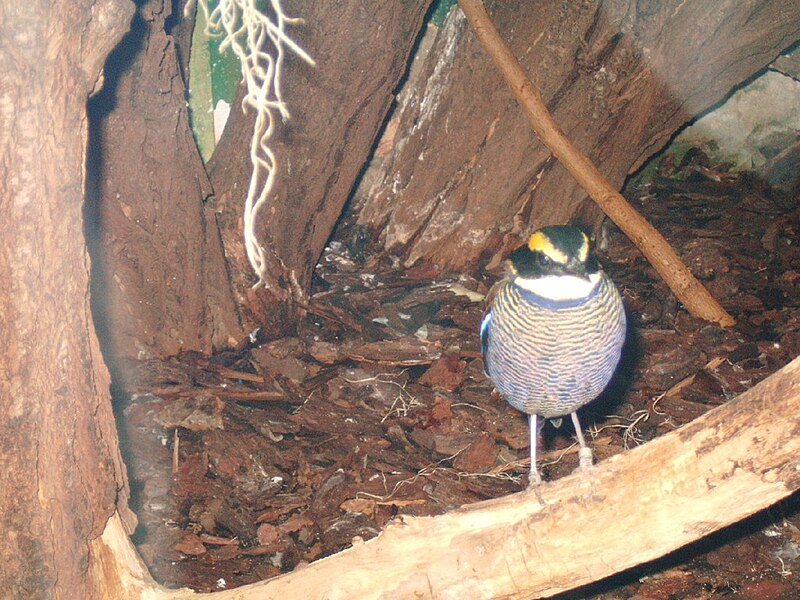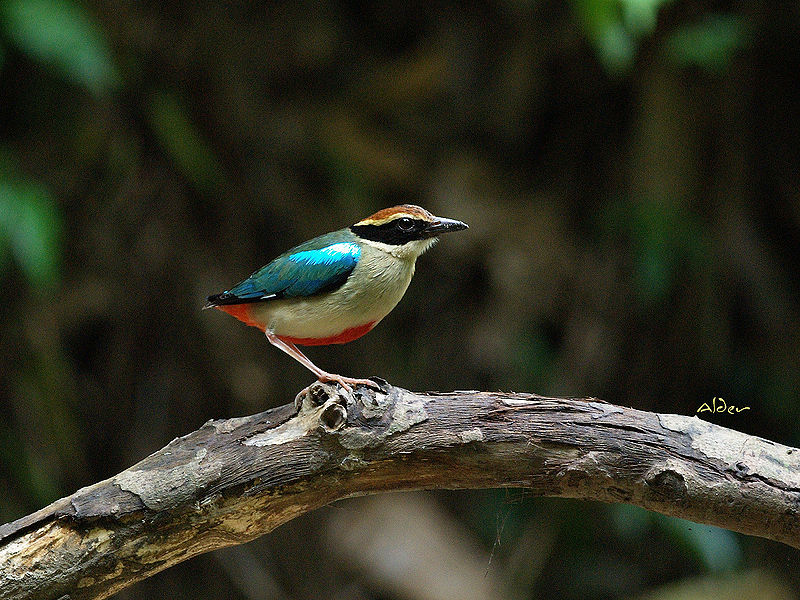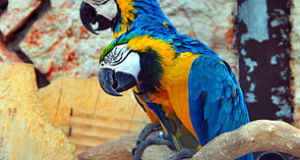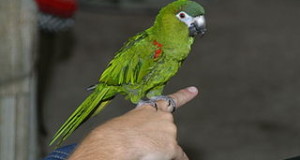
General Considerations
In the wild, Banded Pittas subsist entirely upon snails, earthworms, beetles, spiders and other invertebrates, with perhaps some carrion taken when available. In Part I of this article, I compared their housing requirements to those of delicate reptiles and amphibians. In matters of diet, we see again that their captive needs vary greatly from those of “typical” pet birds.
A highly varied diet is absolutely essential – don’t even think of trying to maintain these delicate specialists on crickets, mealworms and chop meat alone. I’ve always maintained insect traps to help meet he needs of the Banded Pittas under my care; a Zoo Med Bug Napper should be considered by all Pitta-keepers.
Captive Diets
A high-quality commercial insectivorous bird food (please write in if you have difficulty in locating this) into which has been mixed a bit of Softbill Select and an equal portion of Egg Food can form the basis of the diet. Hard boiled egg and some cooked ground beef should be added 3 times weekly. Live insects mixed into this food will encourage reluctant feeders to accept it.
Banded Pittas under my care preferred earthworms to all else, and bird keepers in other zoos report the same. One exhibit I maintained hosted a huge population of land snails, and the Pittas could often be seen hunting these as well.
I’m quite sure my Pittas also caught the occasional Greenhouse Frog and House Gecko (both, were established in the exhibit), but I did not observe this directly.
There are unpublished reports that Banded Pittas take carrion in the wild – mine certainly relished chopped pink mice and ground beef, so I can easily believe that dead animals are consumed by free-living Pittas.
Wild and Canned Invertebrates
Other food items my Banded Pittas favored, or that have been documented by others, include grasshoppers, katydids, crickets, spiders, sow bugs, beetles, termites, moths, mealworms, waxworms, fly larvae – almost any invertebrate, in other words! Please see my articles on Collecting Feeder Insects to learn more about increasing dietary variety.
Canned Invertebrates marketed for use with captive reptiles and amphibians are a convenient means of increasing the nutritional content of Pitta diets. Canned snails are especially valuable, as live snails may be difficult to obtain but are likely an important part of the diet of wild Banded Pittas.
Dried Shrimp, a food favored by old-time bird keepers for insectivorous birds of all types, should also be offered (please see article below).
Other Pittas
 Thirty species of Pitta, all classified within the family Pittidae, are found in South and Southeast Asia, Australia and Africa.
Thirty species of Pitta, all classified within the family Pittidae, are found in South and Southeast Asia, Australia and Africa.
Despite usually bright colors, most are difficult to observe as they are quite shy and stay within thick cover. Therefore, we know little of their status and conservation needs. At present, the IUCN lists 7 species as Vulnerable and 1 as Endangered.
Species other than the Banded Pitta are sometimes bred by aviculturists, more often in Europe and Asia than the USA. Several, including the Fairy Pitta, Pitta nympha, rival the Banded Pitta in beauty (please see photo).
Further Reading
Azure Breasted Pitta info and photos.
Dried Shrimp as bird food; please see this article.
Pitta nympha image referenced from wikipedia and originally posted by alnus
Banded pitta image referenced from wikipedia and originally posted by Melly42
 That Bird Blog – Bird Care and History for Pet Birds
That Bird Blog – Bird Care and History for Pet Birds



